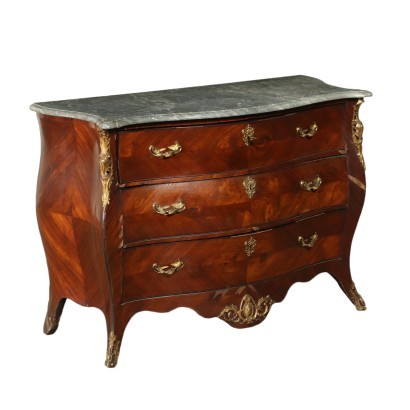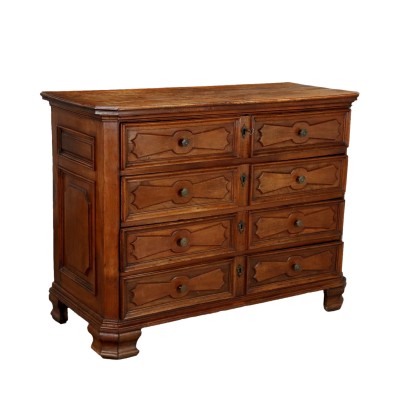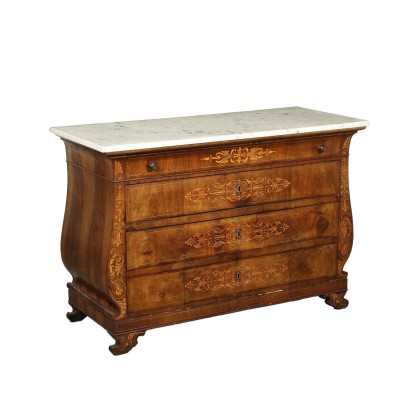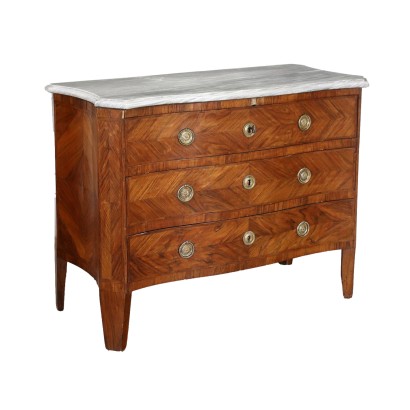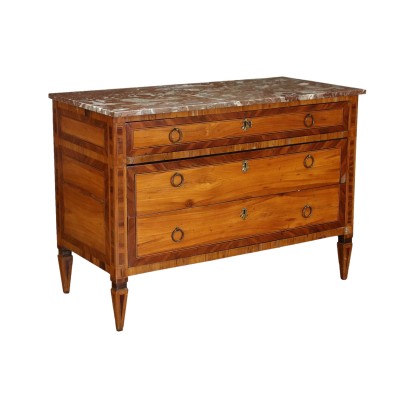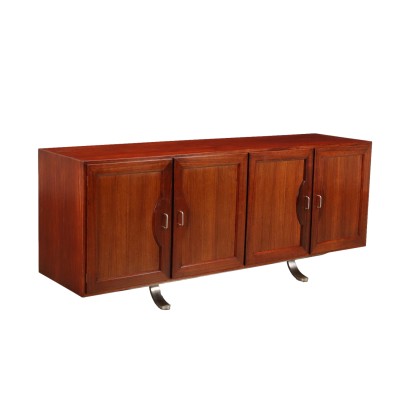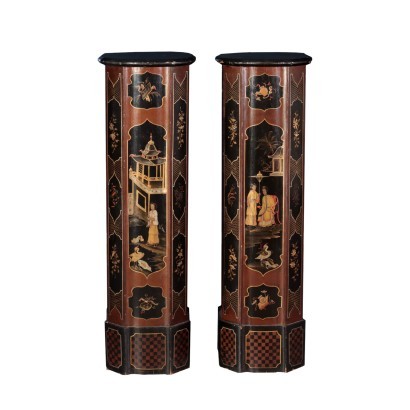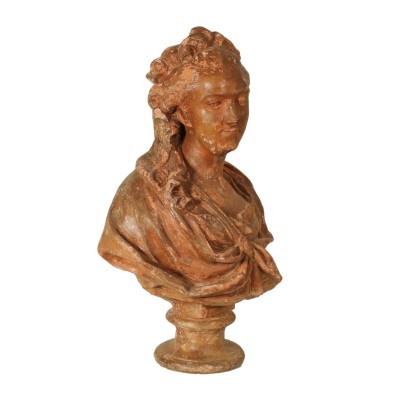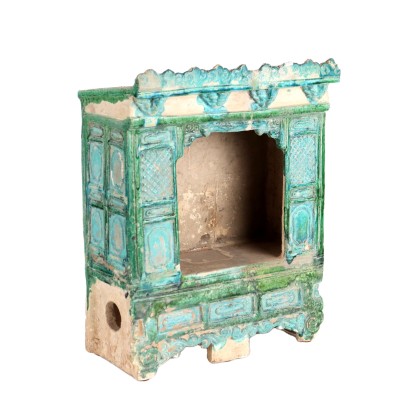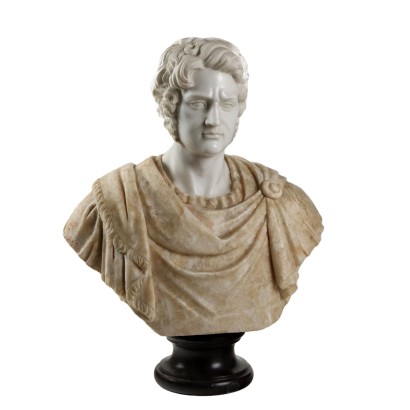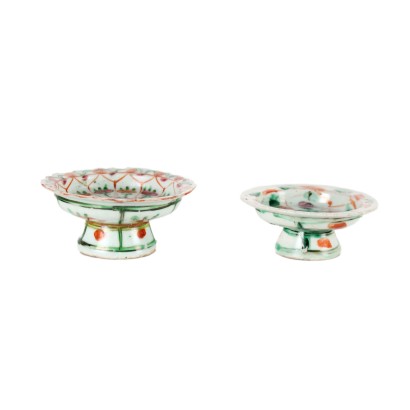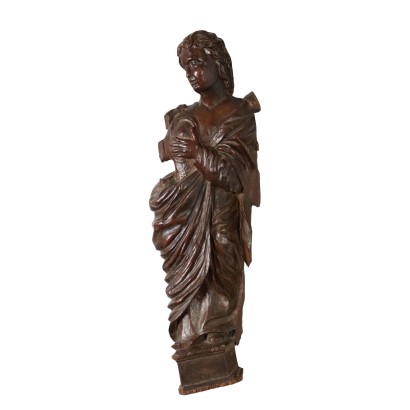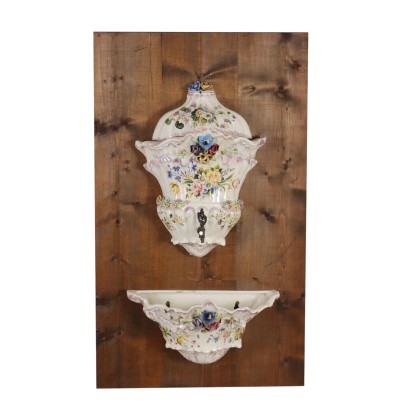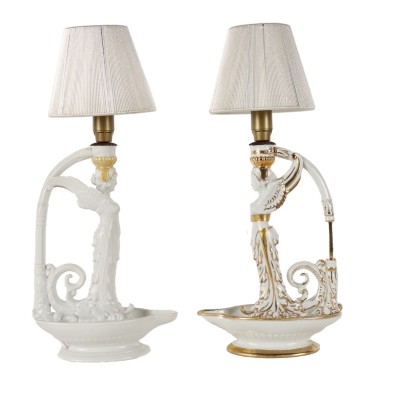Dutch Rococo Chest Of Drawers Oak Brass Marble Holland 18th Cemtury
Features
Style: Rococo (1730-1770)
Age: 18th Century / 1701 - 1800
Origin: Holland
Description
Dutch Rococo chest of drawers supported by curved feet; it has 3 drwers. Veneered oak decorated with bronze elements; moulded grey marble top. It saws small signes of wear.
Product Condition:
The item shows signs of wear due to age. Any damage or loss is displayed as completely as possible in the pictures. It may require restoration and recovery of french polish. Product with a Certificate of Authenticity and Lawful Origin.
Dimensions (cm):
Height: 85,5
Width: 119
Depth: 52,5
Additional Information
Style: Rococo (1730-1770)
Rococo is an ornamental style that developed in France in the first half of the eighteenth century as an evolution of the late Baroque.It is distinguished by the great elegance and sumptuousness of the shapes, characterized by branched undulations in curls and light floral arabesques.
They are expressed above all in decorations, furnishings, fashion and the production of objects.
The term "rococo" derives from the French rocaille, a word used to indicate a type of decoration made with stones, rocks and shells, used as embellishment of garden pavilions and caves.
Rococo was born in France in the second twenty years of the 18th century, under the reign of Louis XV.
Characterized by delicacy, grace, elegance, joyfulness and brightness, it stood in stark contrast to the heaviness and stronger colors adopted from the previous Baroque period.
Rococo motifs seek to reproduce the typical feeling of the worry-free aristocratic life or light novel rather than heroic battles or religious figures.
Towards the end of the 18th century the Rococo will in turn be replaced by the neoclassical style.
FineArt: Il Rococò
FineArt: still life with flowers and fruits in the open air
The furnishings of the Neapolitan Rococò
Rococò taste in Veronese version
The new taste in the Grand Duchy of Tuscany between Rococò and Neoclassicism



